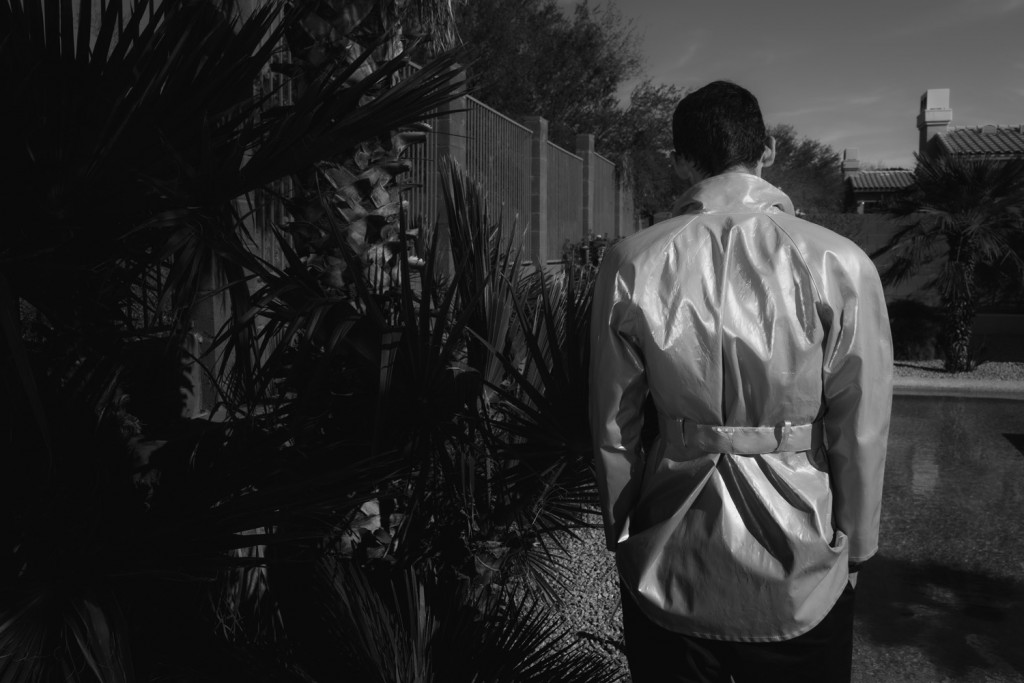
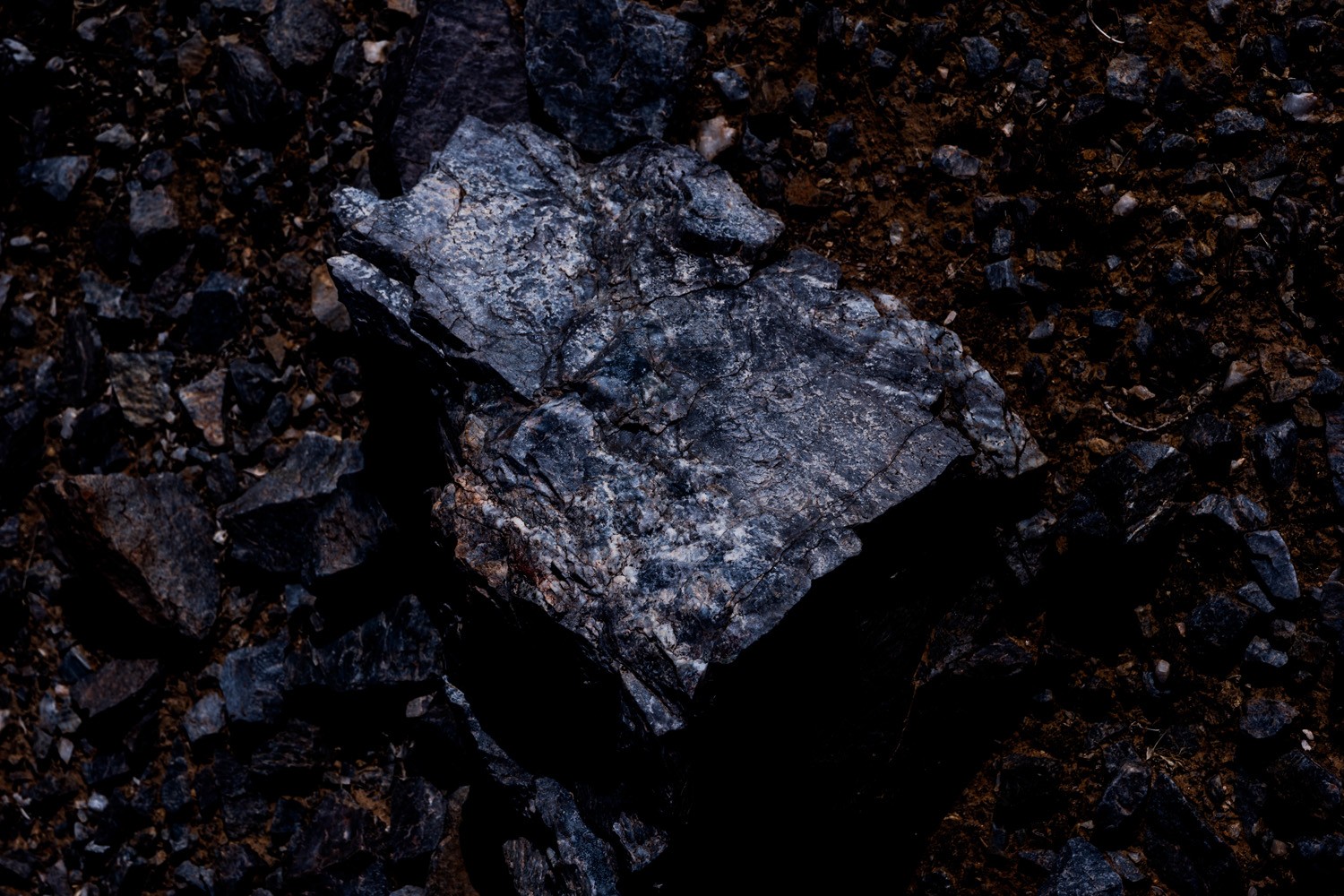
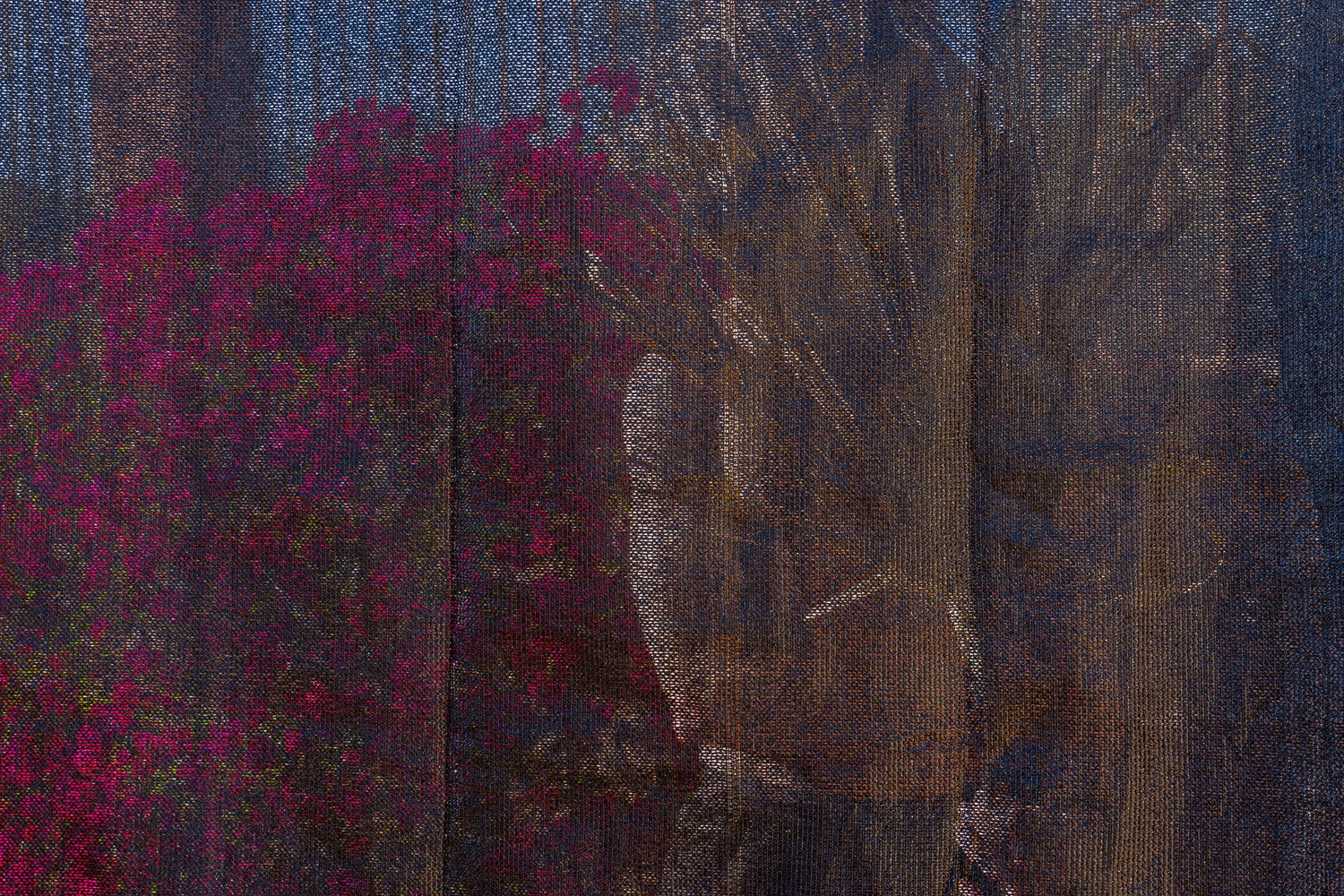
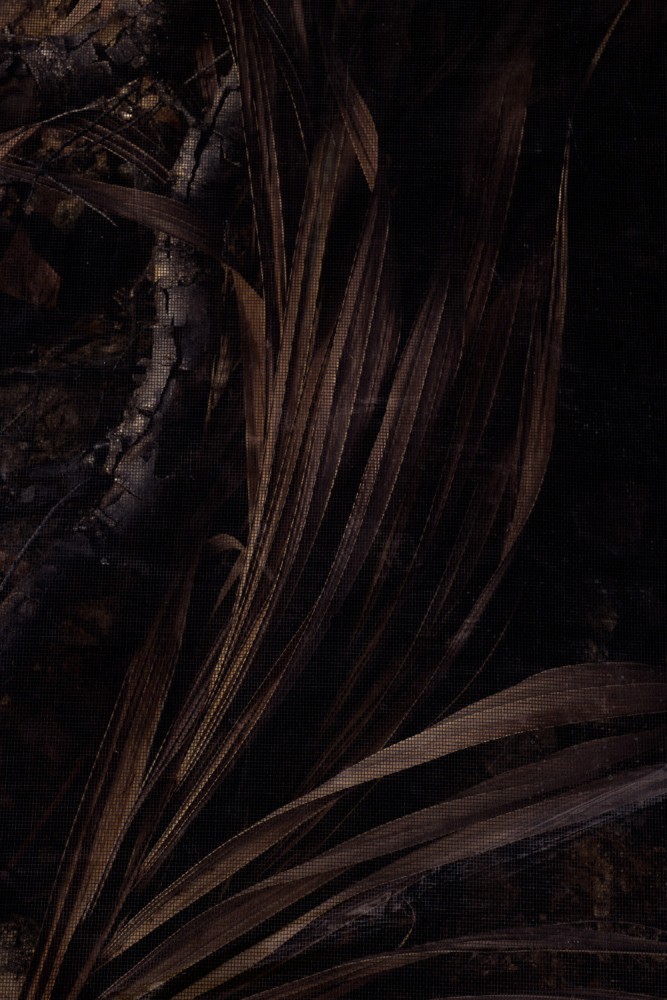
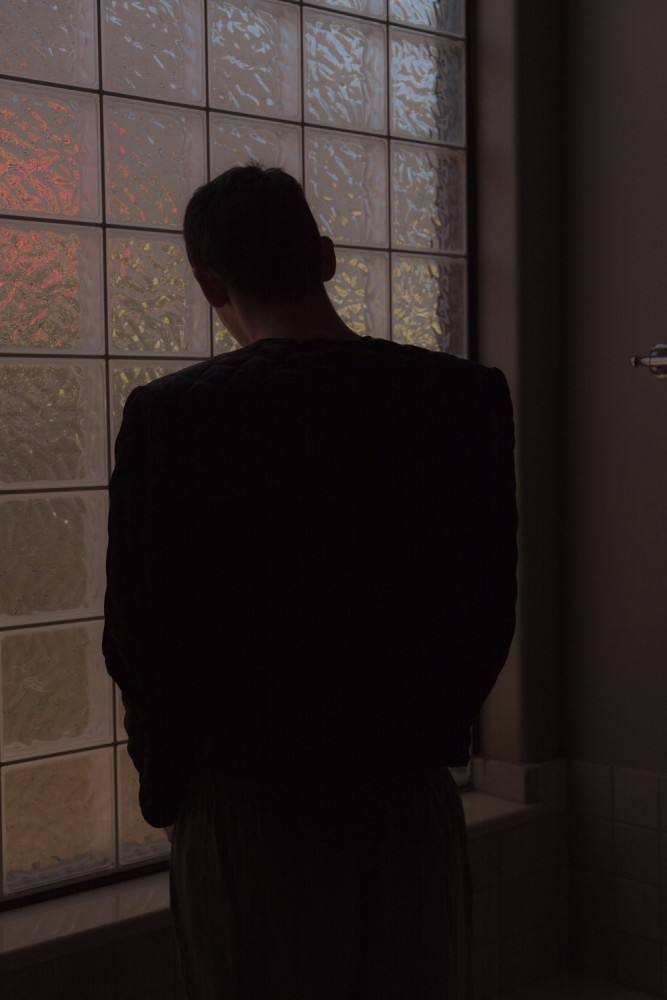
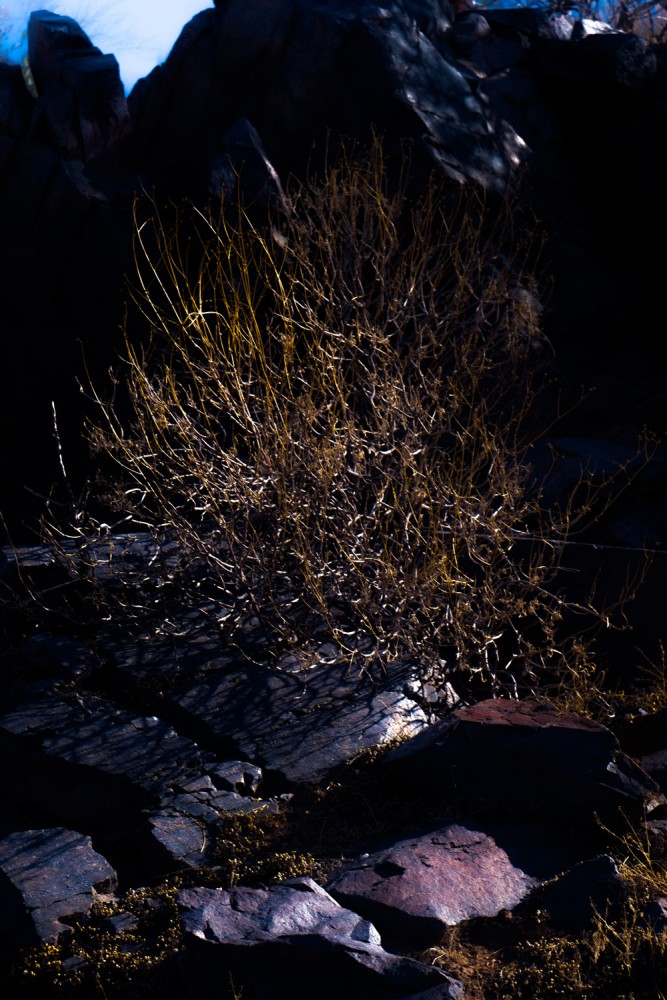
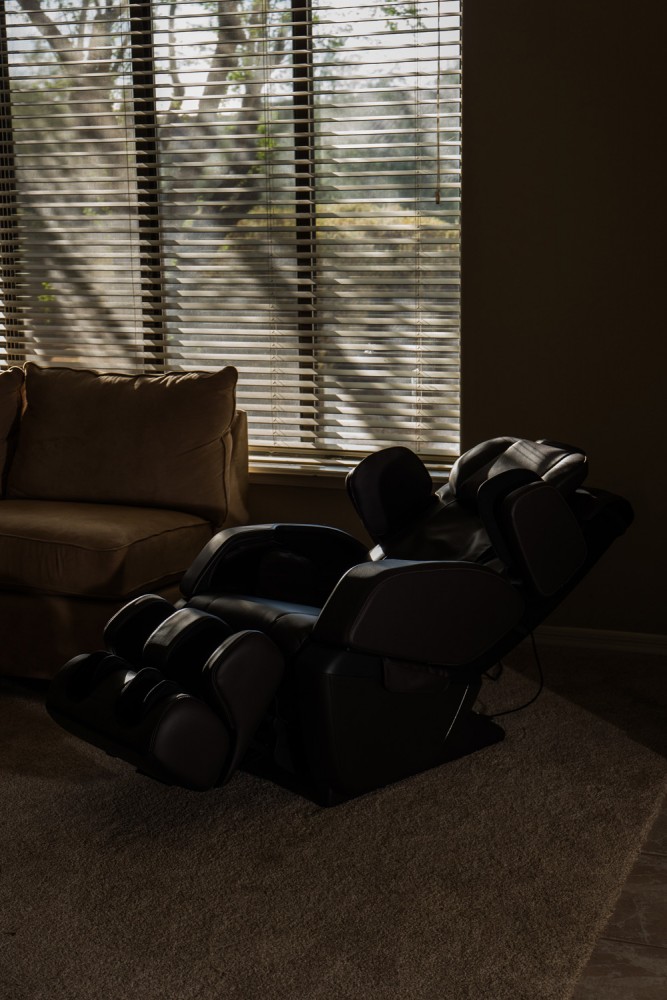
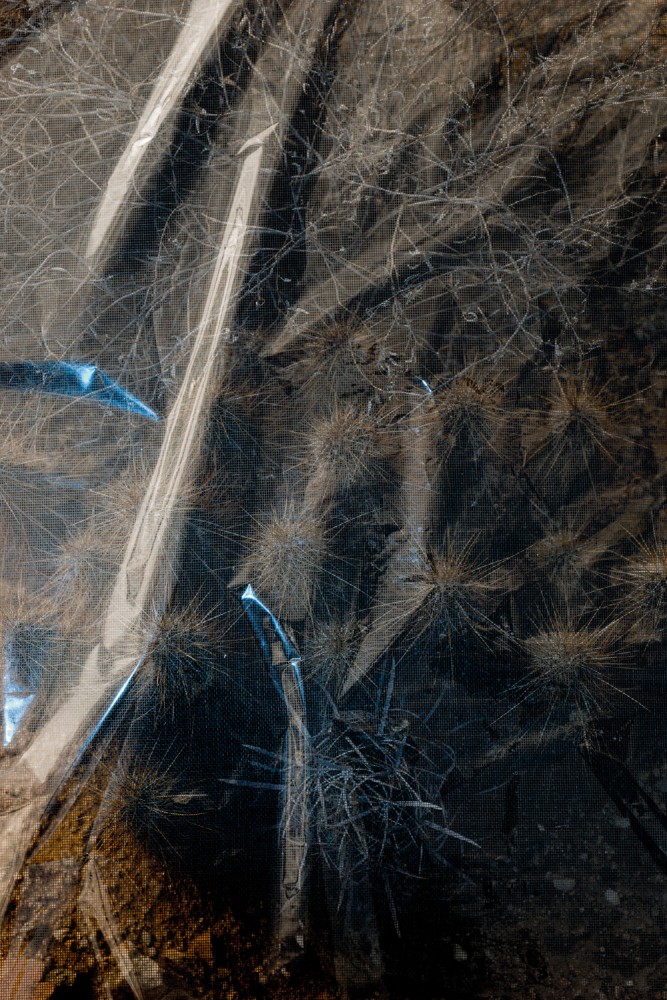
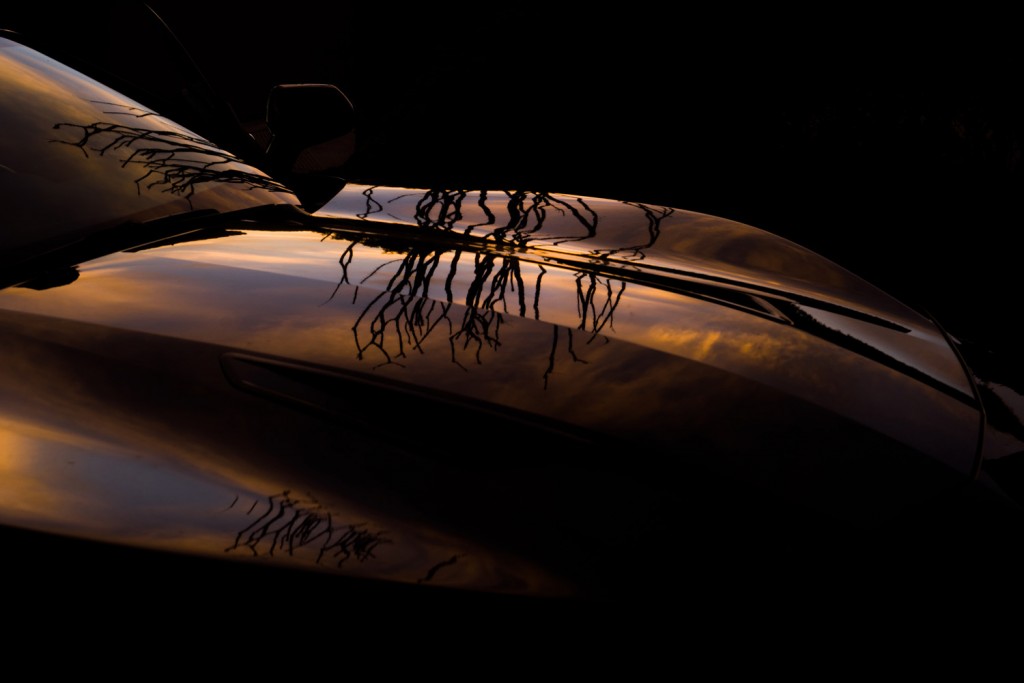
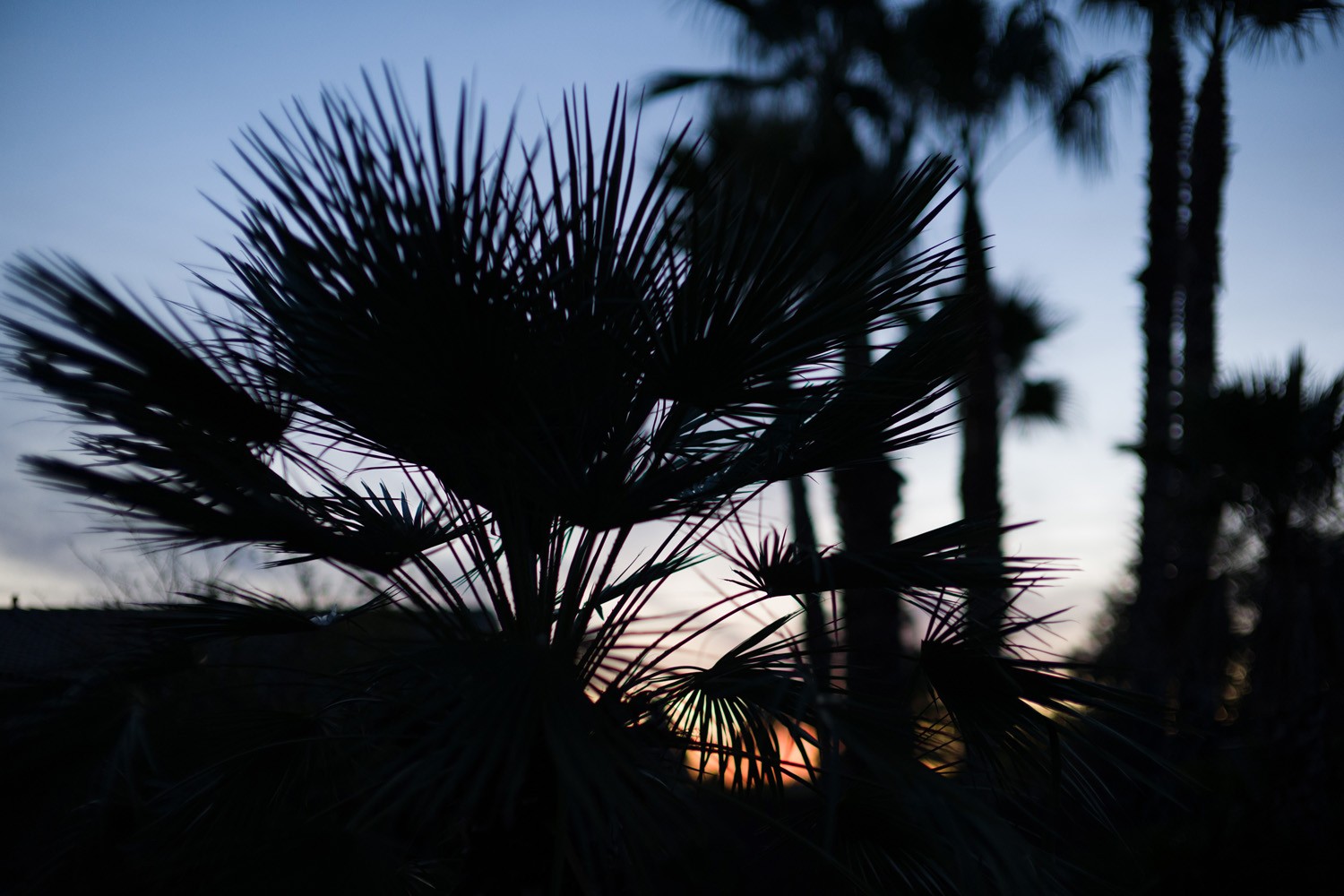
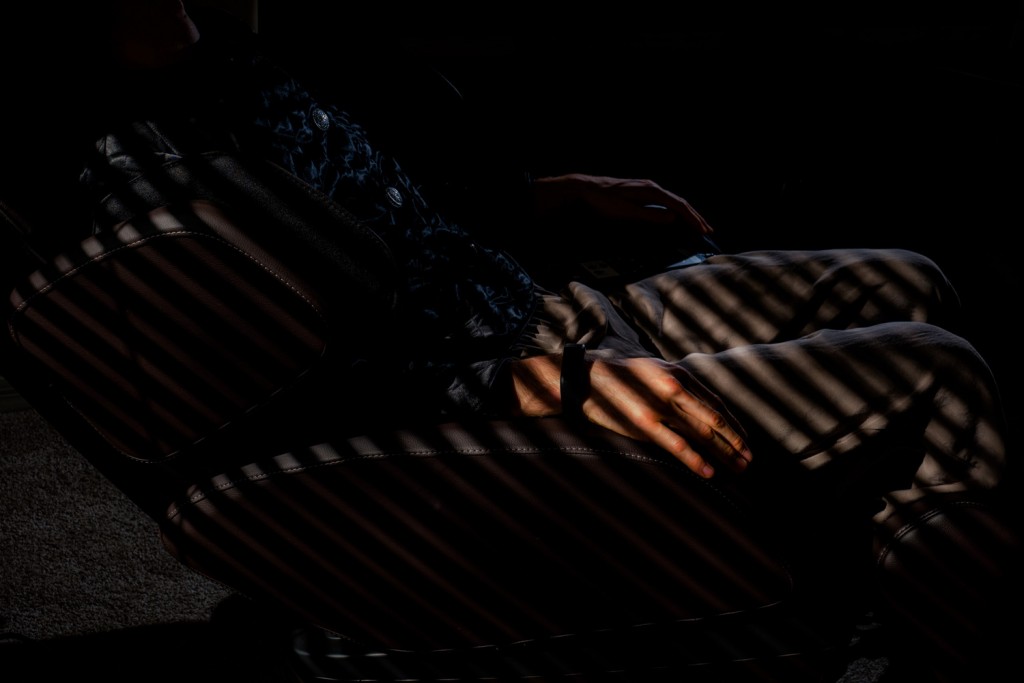
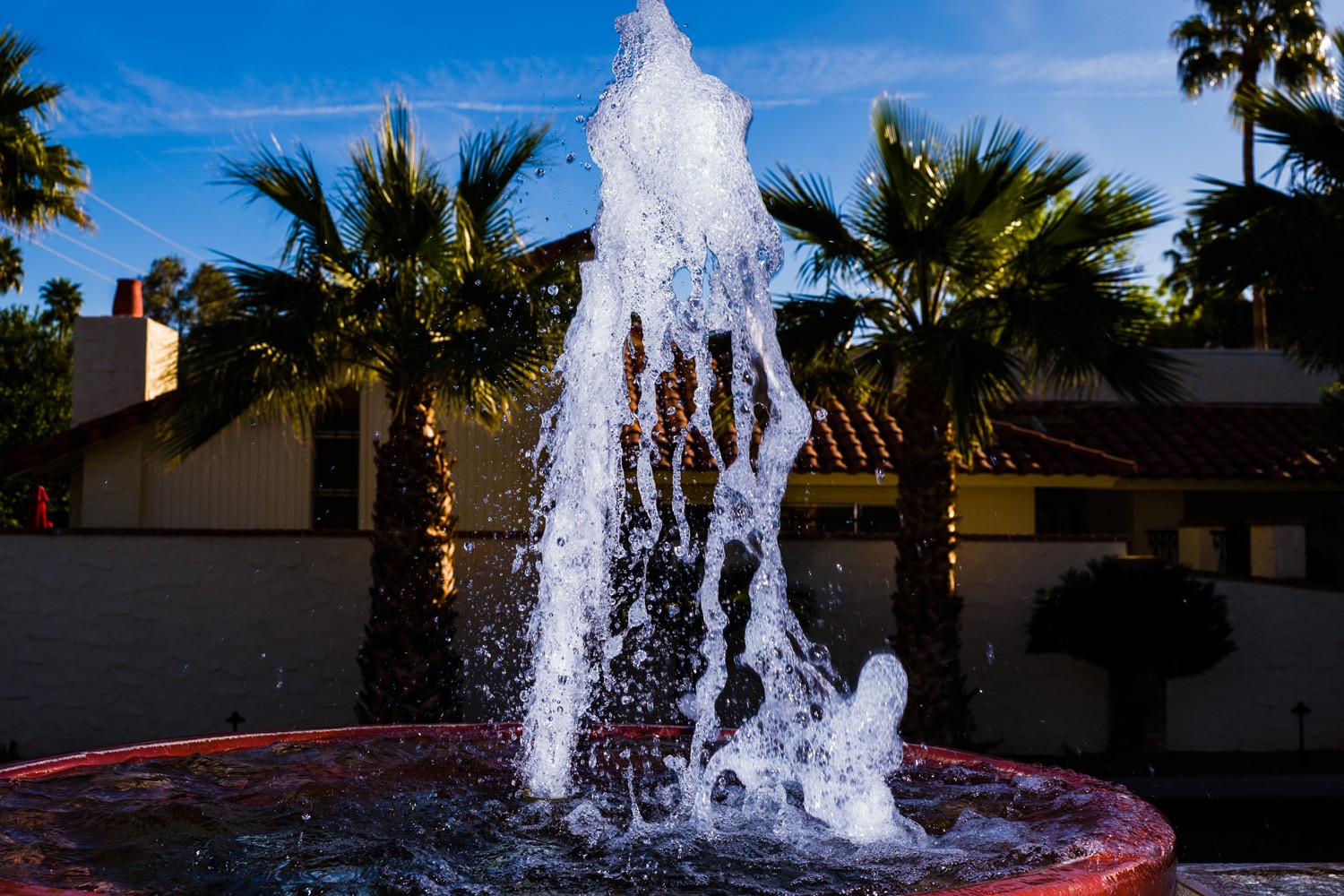
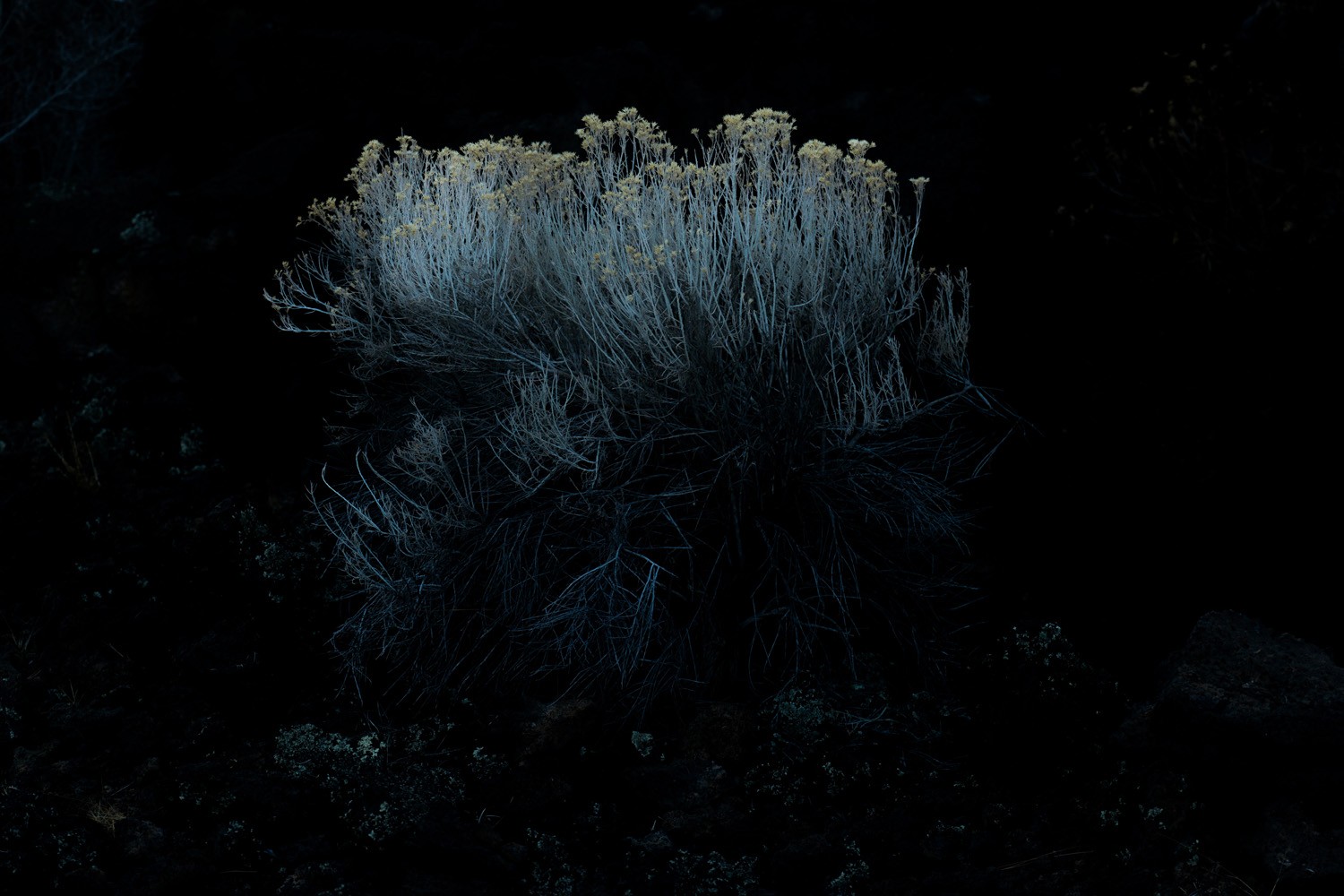
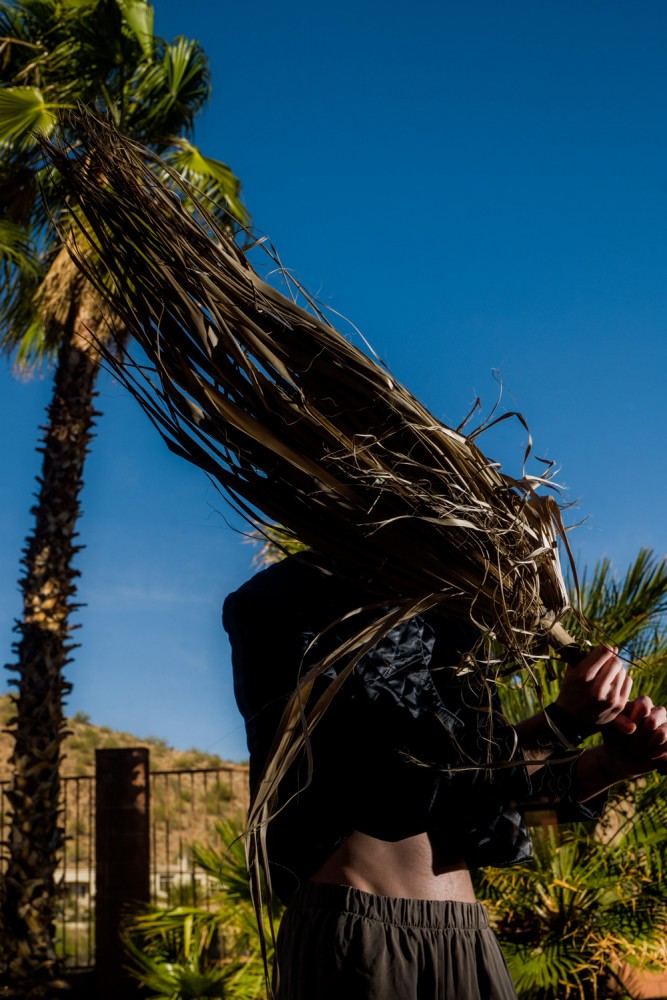
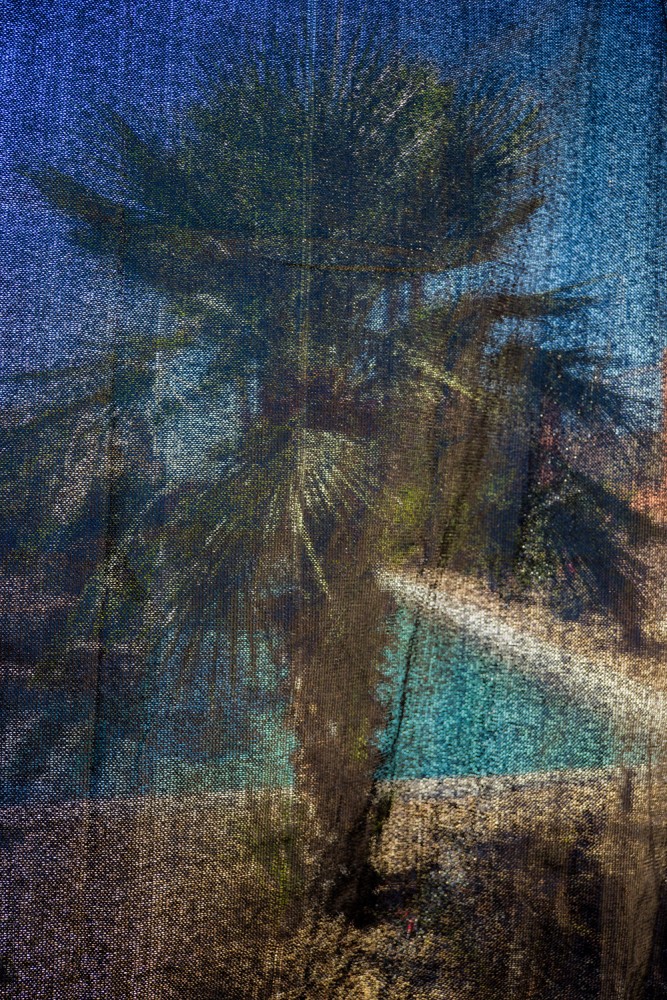
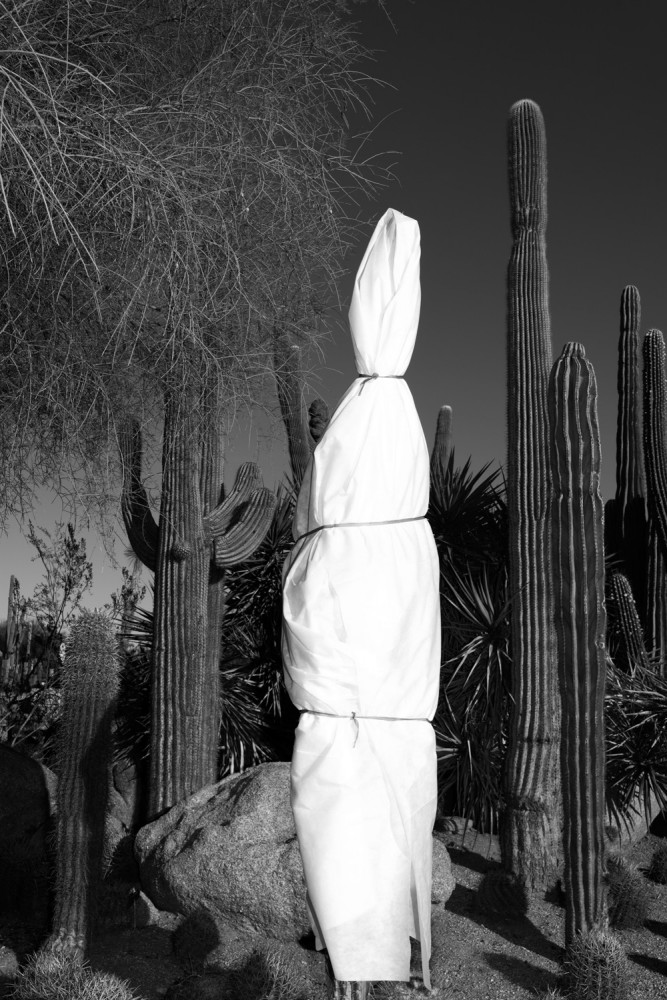
















INTERVIEW
Cornelia Thonhauser

Photography: Cornelia Thonhauser Thanks to: Troy Pierce, Sam Pierce, Dominik Scherübl Camera: Leica SL with Vario-Elmarit-SL 24–90 f/2.8–4 ASPH.
The visual world of Cornelia Thonhauser is characterised by abstractions and unusual perspectives that take the viewer by surprise. Beneath the surface of her depictions is another, deeper layer that reveals the absurdities of our material world. In her feature ‘Hidden Hills’, the Austrian photographer navigates a tension-filled realm between mystical desert landscapes and the artifice of contemporary life.
What was the inspiration for your feature ‘Hidden Hills’?
It all started with me spending a lot of time in the Sonoran Desert. I initially didn’t have anything specific in mind, I just took photographs. I was simply fascinated by what I saw. The process was very organic. At some point I reached a better understanding of what I was really trying to capture, so that’s when I began to orchestrate scenes in a more conscious manner. Four years on, I’m now working on a book that should be finished in early 2020.
You captured these images in Arizona. Does this area play a particular role in your work?
I discovered this location by chance – or fate, if you will. This wasn’t an environment I had been envisioning beforehand, which is why I was able to encounter it without any preconceptions. For me, the part of the Sonoran Desert that I was exploring represents a sense of fulfilment, but the area is also characterised by a conservatism that I can’t identify with. There is a harsher quality to Arizona, and the people are more conservative than in the desert regions of California or New Mexico. But that’s exactly why I’ve come to find this place so challenging and, at the same time, aesthetically appealing. The landscape has become significant to me because it has allowed me to rediscover myself as a visual artist.
Can you elaborate on this?
I’m referring to the tight-rope act of observing a place and a society that you can’t quite identify with, while at the same time refraining from passing judgement. For me, this has turned out to be a great source of creativity. My visual and cerebral encounters with this landscape have imbued my work with an important context that I hadn’t previously found in quite that form. It has added depth to my work and enhanced the impact of my images. This has elicited a lot of positive reactions, and has strongly influenced my subsequent projects.
In terms of your commercial work, you are a fashion photographer – but when it comes to your independent projects, your style tends to be rather abstract…
‘Hidden Hills’ is a continuation of the approach I have pursued from the very beginning. I’ve always been fascinated by mysterious atmospheres, orchestrated moments and the fictional within the everyday. I would love to shoot a fashion editorial in the desert that has the same atmosphere as ‘Hidden Hills’.
Do you ever feel creatively exhausted, and how do you find new inspiration if that happens?
I never stop being curious and always enjoy the creative process. If I do experience work-related exhaustion, it’s most likely of a physical nature – which can have an effect on your mind, as well. If that happens, I just take a moment to step back. Inspiration can come from any direction at any time, there are no guidelines. I love everything, from doing research to taking pictures and immersing myself in a range of different topics.
How did you arrive at your distinctive visual style?
I am fully aware of the feeling that I want my images to elicit. This is connected with a certain colour balance. [hier kl. typo im dt. doc: Das ist ein mit einer gewissen Farbbalance verbunden.] I don’t see visual aesthetics as something static, but rather as something to be continuously refined through lots of research and experimentation. And I’m always keen to find out about new techniques, especially in the field of post-processing.
Is it preferable for a photographer to establish a recognisable style, or should artists redefine themselves on a continual basis?
Whichever feels authentic to you personally. There is a certain rigour and power to dedicating yourself to one specific style or theme over a long period of time. Personally, I like to change and immerse myself in different worlds. Of course I retain a certain visual vocabulary, but I am very flexible with my choice of stylistic tools. This is also a result of my increasing involvment in video and performance art. In both of these fields, collaborating with other artists is paramount, so that there is often an interweaving of different media – which is all part of the beauty and excitement of these projects.
What was it like to work with the Leica SL?
The Leica SL has a very strong presence; it is an object that commands respect – both from myself, and from those around me. In the States, people frequently approached me on the street to ask about the camera. Looking through the viewfinder was always a very special feeling. To work with this camera is to imbue any photographic project with a certain sense of gravitas.